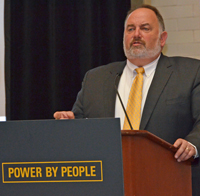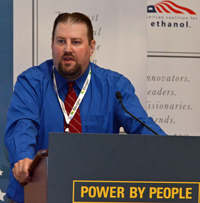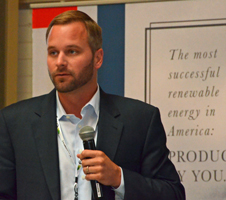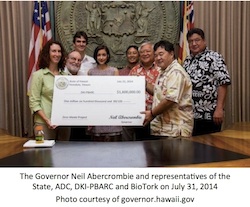 Getting higher blends of ethanol in the marketplace continues to be frustrating, even with the approval of E15 (15% ethanol).
Getting higher blends of ethanol in the marketplace continues to be frustrating, even with the approval of E15 (15% ethanol).
The biggest problem continues to be roadblocks by oil companies, according to American Coalition for Ethanol Senior Vice President Ron Lamberty, who compared the sale and use of E15 to premium gasoline. “If you total (all the) vehicles that could use E15, we’re closing in on 15 million vehicles,” said Lamberty, which is 20% of the vehicles on the road. In contrast, about 12% of total cars are supposed to use premium gas, according to their owners manuals, but only 3% of the gas sold is premium. “Oil companies demand that marketers put premium in their stations … oil companies ban E15 sales,” said Lamberty. Ron Lamberty, ACE Senior VP
 Following Lamberty at the ACE annual conference this week, Dean Drake of the DeFour Group talked about the next chapter for ethanol blend fuels.
Following Lamberty at the ACE annual conference this week, Dean Drake of the DeFour Group talked about the next chapter for ethanol blend fuels.
Drake, who spent 34 years with General Motors, says increasing ethanol blends will require significant cooperation between automakers, government, and the ethanol industry. “Neither oil nor ethanol by themselves are a perfect transportation fuel, largely because of octane,” said Drake. “Gasoline is the king when it comes to energy density, but it also has a fairly low octane rating. Ethanol, while having less energy, has a very high octane rating.”
He talked about the potential for what he calls “eco-performance” fuels. “What we’re talking about here is a fuel that would be widely available that would allow auto manufacturers to build advanced vehicles,” he said.
Learn more here: Dean Drake, DeFour Group














